What comes to mind when you think of Korean food? Most people would say kimchi! Kimjang, the process of making large amounts of kimchi to eat over the winter, is a tradition handed down for generations. Family and neighbors gather for kimjang. The uniqueness of kimjang was acknowledged globally, and in December of 2013, the act of making and sharing kimchi in Korea was added to UNESCO’s (United Nations Educational, Scientific, and Cultural Organization) Intangible Cultural Heritage of Humanity.
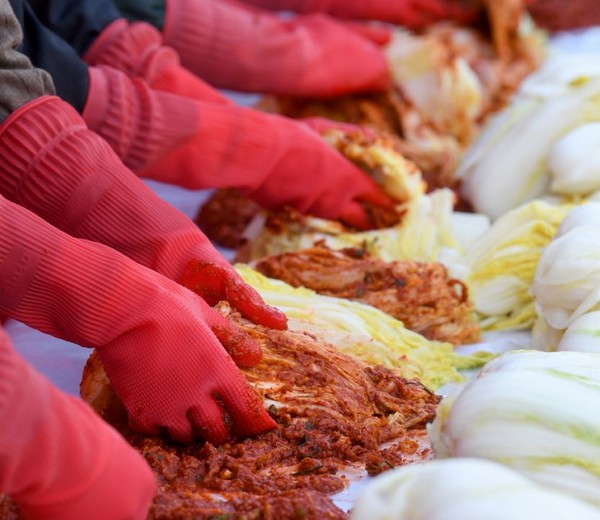
- Why Winter?
Kimjang is carried out between late fall and early winter. That is when the best cabbages, which are the most common ingredient for kimchi, are harvested. Cabbages are harvested year-round, but the majority are harvested in November, including the heaviest.
Historically, kimjang had to be finished before the first frost. Hundreds of years ago, Koreans buried crocks of cabbage and white radish kimchi in the ground to eat over the winter season. If this process is carried out too early when the weather is still warm, the kimchi will turn sour. Koreans have kimchi refrigerators nowadays, storing them at optimum temperatures of about -1℃ to -2℃.
- Change of Taste
Kimchi’s taste changes as time goes by, from raw and fresh to ripe and sour. The lactic acid bacteria that are created during fermentation determines how kimchi tastes. Freshly made kimchi presents the raw ingredients. Then comes the fermentation period of about twenty weeks, which is when the ‘kimchi turns crazy’. This saying mainly used in the Jeollabuk-do dialect means that the ripening stage and taste is not perfected because the lactic acid bacteria is actively multiplying. Most people avoid eating the kimchi at this time and wait for the kimchi to completely ripen.
All the ingredients are in perfect harmony in ripe kimchi, and it continues to turn sour with time. Sour kimchi is used for making jjigae, or soup, fried rice, and for kimchi pancakes, while adding sugar lessens the sourness. Throughout the fermentation process, the taste and spiciness of each kimchi ingredient grows weaker. “To maintain a certain stage of taste, a kimchi refrigerator is essential. In a general refrigerator, the kimchi will go through the raw, ripe, and sour stages relatively quicker. So, storing little amounts in the refrigerator and consuming them in a span of twenty days is recommended,” stated Ahn Myung-ja, a kimchi specialist who runs kimjang classes.
- Limitless Ingredients and Combinations
Seeing different kinds of kimchi in restaurants and friend’s dining tables, many would have realized that they all look and taste different. Most Korean families have their own recipes for kimchi and the ingredients are extremely diverse. Some would even say, “you can make kimchi with anything.” According to the World Institute of Kimchi, there are currently 154 official kinds of kimchi. This includes common ones made with cabbages, white radishes, and green onions. There are inevitably more because people even make kimchi with watermelons, avocadoes, chestnuts, and tomatoes. “Kimchi made with mustard leaves and stems, radishes, and green onions are currently in season. It is important to choose fresh ingredients and highlight one’s preferences. Garlic, salted seafood, red pepper powder, and grain powder are essential for the deep flavor of kimchi,” Ahn said.
Kimchi can be a main ingredient in many dishes, but it is usually served as a side dish. It pairs well with almost every Korean dish, and some people eat it with only freshly cooked rice. For beginners, it is highly recommended to eat kimchi with boiled or grilled pork, instant noodles, tofu, or sweet potatoes.
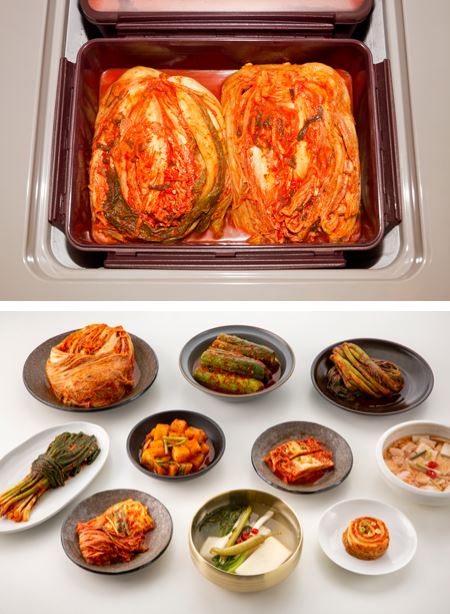
- Culture of Cooperation, Kimjang
Many local people and foreigners participated in the fourth annual event of the <Kimjang Culture Festival>. It was held for three days from November 18th to 20th. Four hundred families received kimchi from the Jeonju Food Direct Outlet on the 19th and six hundred families experienced kimjang from November 19th to 20th. This festival, which was held at the Jeonju Civil Stadium, was crowded with people who wanted to experience kimjang. Civic organizations also participated and made kimchi to donate to vulnerable social groups.
Staff member Kim Cho-hee, who works at the Policy Planning Office of the Jeonju Food Integration Support Center, commented on the purpose of the festival. Kim said, “the purpose of this festival is to inherit and spread the disappearing kimjang tradition with agricultural products that were produced and certified in Jeonju.” Kimjang tradition is disappearing as society changes. That is because people think it is more advantageous to consume kimchi products than to make kimchi in terms of efficiency. Residents of apartments think making kimchi is burdensome and cumbersome. At this event, the Jeonju Food prepared pickled cabbage and various ingredients for participants. Through this, participants could easily make kimchi.
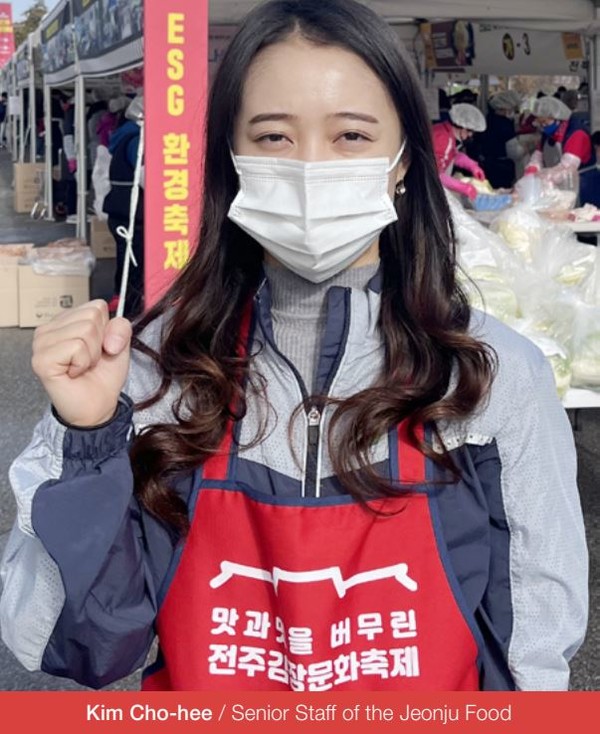
Meanwhile, at this year's event, there were differences from previous years. Kim said, “this year, the festival specialized in an ESG(Environmental, Social and Governance) festival that minimizes waste.” The organizers minimized the provision of personal disposable items such as vinyl, and asked participants to take back the garbage they had emitted. The ESG festival can contribute to the realization of carbon neutrality. Also, the prearranged event was inevitably reduced due to the 10·29 disaster in Itaewon. The opening ceremony was not held, and cultural performances, specialized programs, and food booths were not operated.
The Jeonju Food, the festival’s organizer, was established on the basis of the <Jeonju Food Plan 2025> in September 2015. The <Jeonju Food Plan 2025> is Jeonju City's food strategy that unites health, environment, and society. Kim said, "our Jeonju Food is an organization that was contributed to by Jeonju City and was created to protect the safe production of food for Jeonju residents. Currently, agricultural products are supplied for school meals in Jeonju, and we are striving for food safety for vulnerable groups such as daycare centers and welfare centers.” She added, “in addition, our organization strives to promote the revitalization of Jeonju's self-reliant circulation system. Through this system, local agricultural and livestock products can be consumed in the region and contribute to a stable and sustainable income generation.” In particular, a communication channel was prepared at this event for Jeonju citizens and Jeonju producers to meet and communicate.
Kimjang is not only for preparing for winter but also helps to increase solidarity and community consciousness. UNESCO also considered this aspect when it registered kimjang, and kimjang participants said they hoped to inform their children about this culture of “mutual help”. Many organizations made a kimchi donation at the festival, and it contributed to the restoration of a sense of community and the spread of a sharing culture.
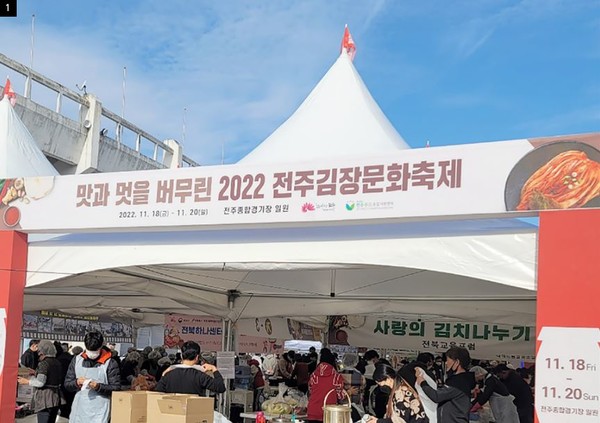

- Anyone Can Enjoy Kimjang
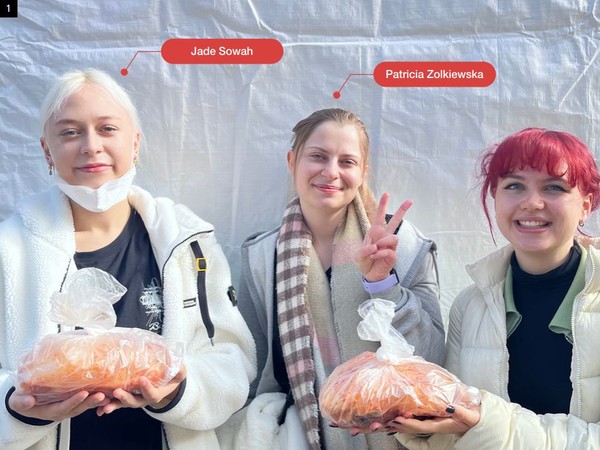
International students at JBNU came to the festival. What were their impressions of the unfamiliar experience of making kimchi? Furthermore, what community culture is similar to kimjang in their countries? The JBNU Globe interviewed two international students who enjoyed the festival. Patricia Zolkiewska is from Poland and is majoring in International Studies Korean Track. She said that her professor invited international students to the festival and advised them to enjoy making kimchi. She continued, “kimjang was very fun. Kimbap is my favorite Korean food, and I want to eat it with kimchi. I want to make kimchi jjigae with the kimchi I made.”
She also discussed her country's similar kimjang culture. “Poland has a community culture of making pierogi and krokiety. Pierogi is an Eastern European dumpling and krokiety is a croquette similar to spring rolls. In particular, krokiety is mainly made at Christmas, rolled with cabbage, meat, and cheese, then frozen and eaten for a year,” she added.

Jade Sowah, who is from England and majoring in English Education, said this festival was mentioned in the JBNU AUEA group chat, and once she saw it, she really wanted to go. The professor in charge of the JBNU AUEA group highly recommended the event and she decided to go. She continued, “I really liked the taste of the kimchi. It’s nothing like what I’ve tried before and has a distinctive taste overall. I’m vegetarian, so it’s an additional food I can comfortably eat. I find the Korean community culture of making kimchi quite fascinating. I can’t compare it to anything else, and I like how it brings people together. People genuinely seem to enjoy the process and have fun with it.”
She also introduced a dish that people in England enjoy. “Many families cook Sunday roast on a Sunday and during Christmas. It mainly consists of roasted meat, mashed potatoes, gravy, vegetables, and Yorkshire puddings. I often eat it back home,” she added.
“Through many kimjang classes I've done abroad, I learned that foreigners like the most traditional kind of kimchi. Even those who disliked the smell took it in as a whole experience after understanding the mechanism of fermentation. I personally don’t think Koreans should feel pressured to recommend kimchi fusion dishes or non-spicy kimchi to foreigners, and let them decide,” Ahn stated.
Not only were foreigners enjoying kimjang, but Korean families were seen making kimchi together. Parents helped as their children put seasoning on the kimchi with their small hands. Park Jae-hee, who participated in the festival with her daughter, said that she made kimchi at home every year. She could not do kimjang at home this year, so she came to conveniently make kimchi at the festival. Park said, “it was difficult because it was my first time adjusting the amount of seasoning. I had no choice but to go grab seasoning from here and there because I had used up too much in the beginning. That was the only difficult part. Most of the preparation materials were provided by the organizers, so I could easily make the kimchi. It was too bad that I couldn’t see the other events because I was so focused on kimjang.”
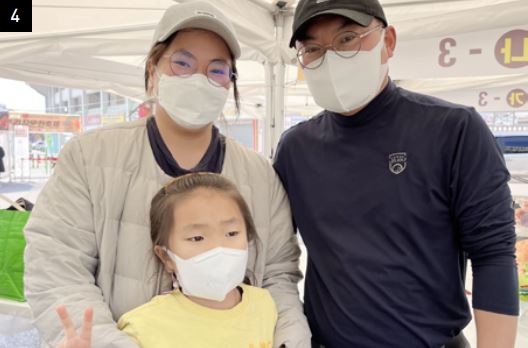
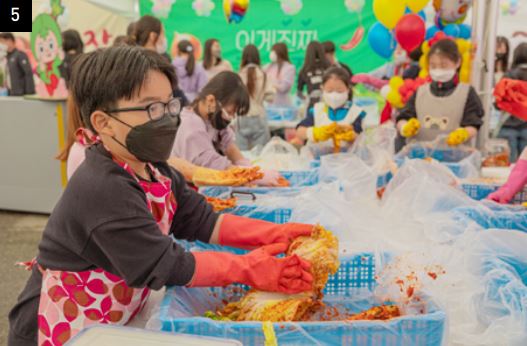
She continued by saying that it would be good for the vulnerable social groups who receive the kimchi made at this festival to also participate in kimjang. She thinks it could be meaningful for them to see the process of making the kimchi that they eat. She also commented on participating in kimjang with her daughter. “I hope today will be an opportunity for my daughter to learn how to make kimchi and participate in a communal sharing culture. The community makes food carefully together and shares it with each other.” Kim Jin-ha, Park's daughter, said, “making kimchi was difficult but also fun. It was difficult for me to spread seasoning on the cabbage thoroughly. I hope there will be an event for making foods using kimchi at the festival next year.”

The lactic acid bacteria in kimchi are known to help overcome COVID-19, along with the various other health benefits of fermented food. Not only can you make various foods with kimchi, but you can also share it with your neighbors. Sharing kimchi with each other can strengthen a community relationship. If you are not sure how to make kimchi, you can take a monthly kimchi class at the Jeonju Food Market, the organizer of this event. How about making your own kimchi?
| Chin Da-youn Editor, Ha Yae-one, Chae Won-jin Reporters

